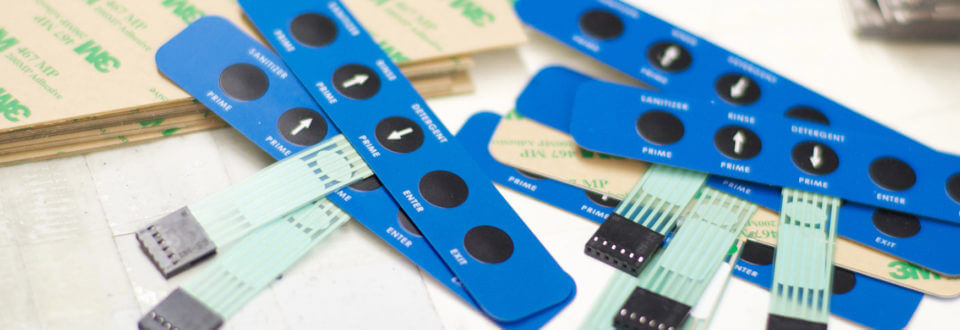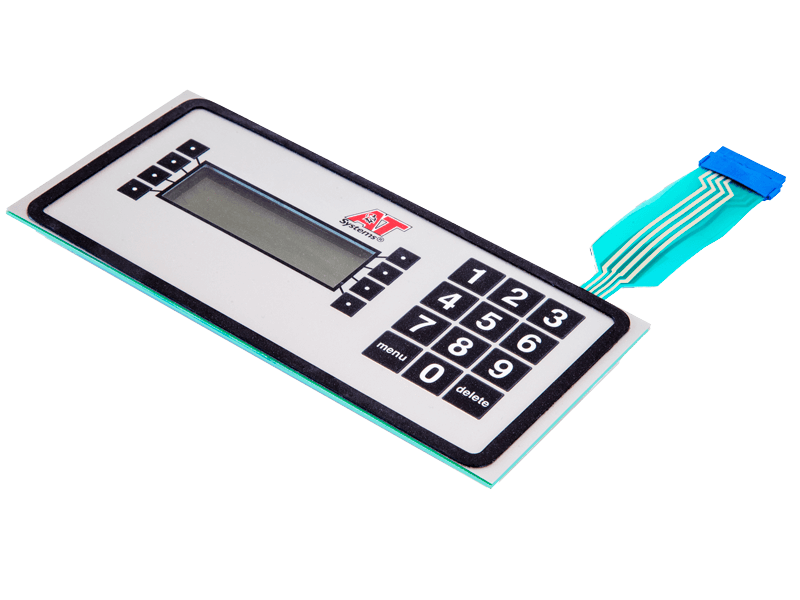Discover the Significance of Membrane Switches in Streamlining Tool Controls
Discover the Significance of Membrane Switches in Streamlining Tool Controls
Blog Article
The Ultimate Resource on Membrane Layer Switches: Design, Capability, and Applications
Membrane layer switches offer as an appealing crossway of style and capability, playing an essential duty in contemporary individual interfaces throughout numerous industries. As we check out the diverse applications of membrane switches, it ends up being obvious that their flexibility and resilience are essential in atmospheres ranging from health care to customer electronic devices.

Understanding Membrane Layer Buttons
Membrane layer switches are a kind of customer interface modern technology commonly utilized in different electronic tools, defined by their thin, adaptable design and performance. These buttons contain numerous layers that include visuals overlays, adhesive layers, and wiring, making it possible for a reliable and small interface for individuals. They can be located in devices, clinical devices, and commercial control panels, giving a trusted approach for individual interaction.
Among the key advantages of membrane layer switches is their capability to stand up to contaminants such as dirt and moisture, making them ideal for atmospheres where sturdiness is vital. Their low-profile style permits smooth combination into different applications, while the personalized visuals overlays boost customer experience by offering clear aesthetic comments. In addition, membrane buttons can accommodate a selection of modern technologies, such as responsive comments and backlighting, further improving their functionality.
The manufacturing procedure for membrane switches over typically involves display die-cutting, printing, and lamination strategies, guaranteeing precision and uniformity in manufacturing. In general, membrane layer switches stand for a functional and effective remedy for contemporary digital tools, incorporating functionality with aesthetic appeal in interface layout.
Secret Parts and Layout Aspects
A variety of crucial parts and style components collaborated to produce an efficient membrane switch. At the core, the graphic overlay offers both useful and aesthetic purposes, providing an user-friendly user interface while protecting inner elements from environmental factors. The option of products, normally polyester or polycarbonate, influences resilience and responsive feedback.
Under the overlay, the adhesive layer guarantees the switch sticks securely to the substratum, which can be steel, plastic, or glass. The spacer layer is important, as it maintains the necessary void in between the overlay and the circuit layers, enabling effective actuation. Membrane Switches. Circuit traces, typically made from conductive ink or adhesive, are printed on a versatile substrate, allowing electric signals to be sent when pressure is used
Design considerations also consist of the setup of responsive domes or embossing that give physical responses to the individual, improving the general experience. Furthermore, the layout and spacing of the switches have to be optimized for ease of usage, making certain that individuals can navigate the interface intuitively. Generally, these elements and design components work synergistically to develop a reliable, practical membrane button tailored to certain applications.
Functionality and Operation System
At the heart of effective capability for membrane switches lies their functional mechanism, which assists in individual communication with an easy yet efficient layout. These switches run on the concept of stress activation, where an individual applies force to a marked area of the switch (Membrane Switches). This activity presses the layers of the switch, finishing an electric circuit that sends a signal to the linked gadget
The building generally consists of a leading graphic layer, a glue spacer layer, and a bottom circuit layer, which collectively create a robust user interface. When pressure is used, the leading layer breaks down against the bottom circuit layer, allowing conductive traces to connect. This layout not just enables clear tactile responses yet also makes sure resilience and integrity, as Continue the buttons are commonly resistant to dust and dampness.
In addition, the adaptability of membrane layer switches over enables integration with various innovations, including LED signs and microcontrollers, boosting their functionality. By offering a streamlined user interface that minimizes mechanical wear, membrane layer changes remain a preferred selection in applications ranging from consumer electronics to industrial tools, ensuring optimum performance and customer complete satisfaction across varied atmospheres.
Sorts Of Membrane Layer Buttons

One more considerable group is illuminated membrane buttons, which integrate backlighting to boost visibility in low-light problems. Discover More Here These buttons are commonly made use of in control panels and dashboards where clear exposure is essential.
Additionally, there are custom-made membrane changes developed to fulfill specific dimensional, visual, and useful requirements. These customizations can include unique forms, shades, and formats, permitting seamless combination right into numerous gadgets.

Applications Throughout Different Industries
Just how do membrane layer buttons enhance performance across diverse markets? In the clinical sector, membrane layer buttons play an important function in gadgets such as analysis tools and client surveillance systems, where reliability and ease of cleansing are critical.
In the auto sector, membrane layer buttons are typically used in dashboards and control board, providing instinctive controls that improve vehicle driver safety and security and comfort. The consumer electronic devices sector likewise takes advantage of their personalized and lightweight attributes, allowing sleek layouts for mobile phones and home devices.
Furthermore, membrane layer switches find applications in commercial automation, where they contribute to reliable machinery procedure and monitoring systems. Their resistance to dirt and wetness makes read the full info here sure functionality sought after conditions (Membrane Switches). Furthermore, the food and drink industry utilizes membrane buttons for devices control, where hygiene and resilience are essential
Final Thought
In conclusion, membrane layer switches stand for a vital advancement in user interface modern technology, identified by their one-of-a-kind layout and capability. The versatility of membrane layer switches promotes their application throughout diverse industries, from clinical tools to consumer electronic devices.
Membrane switches serve as an appealing intersection of design and capability, playing a pivotal function in contemporary individual interfaces throughout various industries.Membrane buttons are a type of user interface modern technology widely made use of in different digital tools, characterized by their thin, adaptable design and performance.At the heart of efficient functionality for membrane changes exists their functional system, which promotes individual interaction via a simple yet efficient design. These buttons operate on the concept of stress activation, where a customer applies pressure to a marked area of the button.In final thought, membrane switches over represent an essential innovation in customer interface innovation, identified by their distinct style and capability.
Report this page